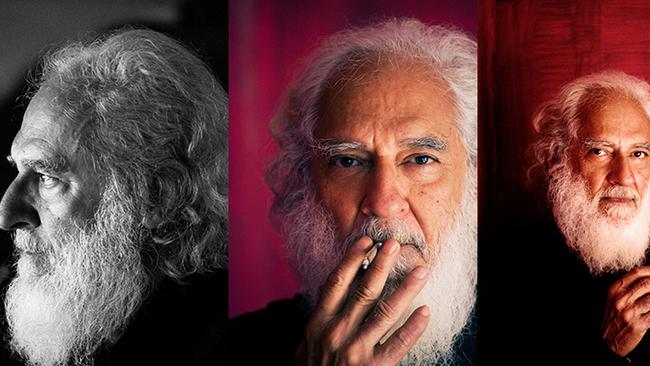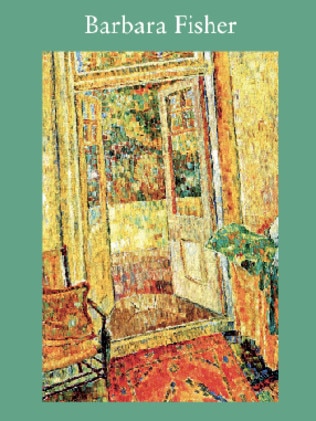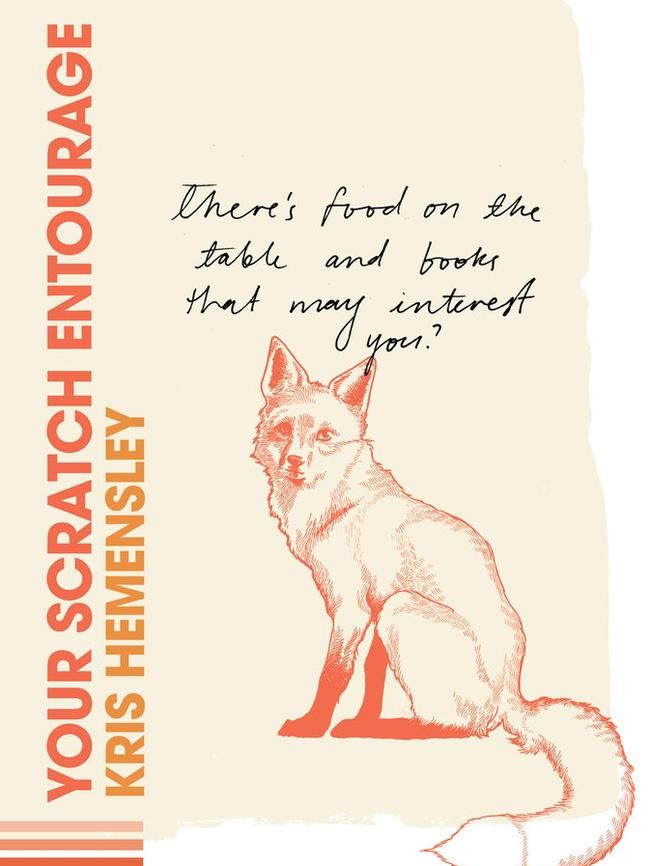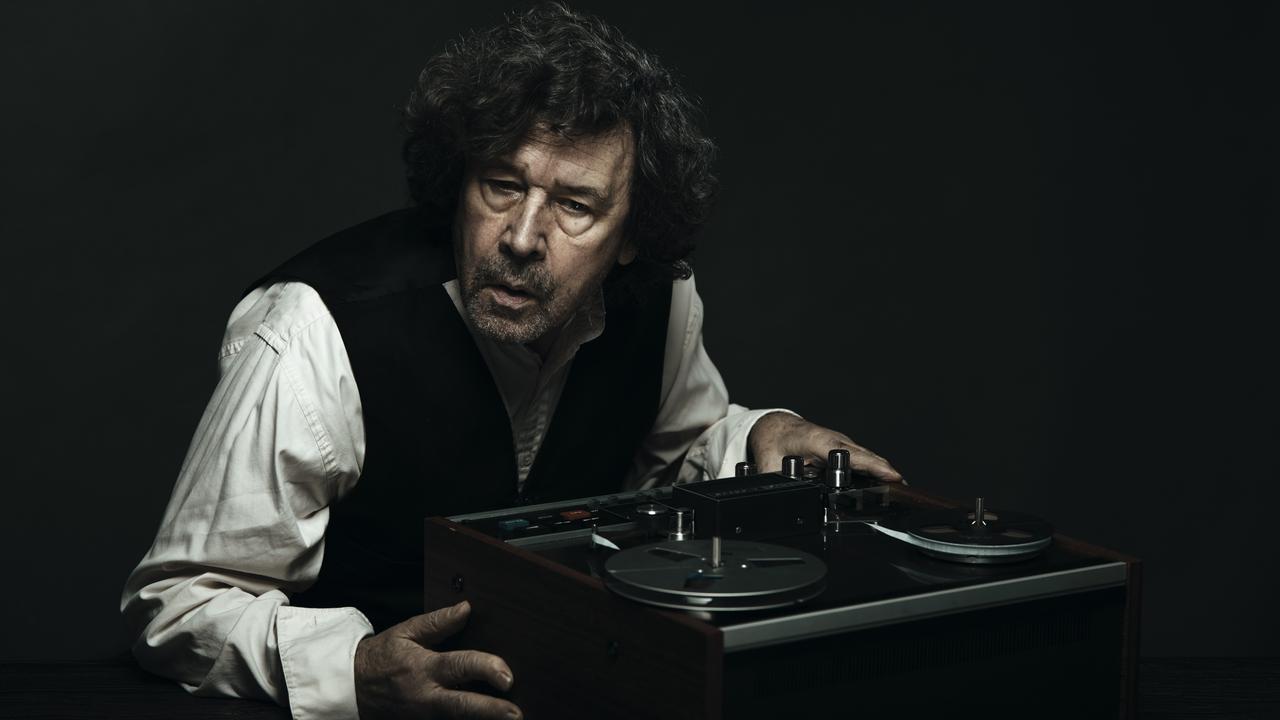Poetry: Barbara Fisher; Kris Hemensley; Arvind Krishna Mehrotra
Barbara Fisher is one of a group of Australian women poets who started late and had to make up for ‘‘lost’’ time.

Sydney’s Barbara Fisher is one of a notable group of Australian women poets who started (or resumed) late and had to make up for ‘‘lost’’ time. Others have included Barbara Giles, Amy Witting, Joyce Lee, Vera Newsom and Margaret Scott.
Fisher emphasises this reclamation project in her title, Rescued from Time (Ginninderra Press, 108pp, $20). Many of her poems go back (often nostalgically) to earlier periods in her own life and sometimes, as in A Colonial Story, much further. Occasionally, Fisher’s quotidian details risk obscuring rather than reinforcing the main thrust of the poem. At other times we have a sharp intellect holding the whole poem in balance and a moving and thoughtful point being made.

A fine example of the latter is found in Historic House Visit, a tightly controlled abcb poem reminiscent of Gwen Harwood’s sly satires on “Professor Krote”. Fisher’s own “absent-minded, bored and cross” professor is “enduring a holiday with his wife”, viewing the best colonial houses the outpost has to offer. In the “master bedroom” he sulkily fantasises about the “radiant flesh” of Ariadne before the last quatrain abruptly restores perspective:
So it might be he mused, recalling
motel rooms and carpet-smelling air,
their clothes on hangers side by side,
and Ariadne, naked, brushing her hair.
There are quite a few other poems of this quality, if not exactly this manner. In the 11-page narrative poem A Colonial Tale, Fisher establishes a delicate balance between the sanitising account of “Miss Phillimore”, a rather staid writer who has over-invested in one version of the story, and “Old Jim”, a local who gives a much more scandalous account. Fisher is at ease with these sorts of poems where her confident citation of domestic details from earlier periods creates a memorable authenticity.
Less persuasive perhaps are poems such as Sydney to Melbourne, where the poet seems unreasonably confident that the presentation of such details will, of itself, make for a substantial poem. On the night train, “sitting up” all night, the poet remembers as a schoolgirl the dawn image of the “bleached and empty paddocks / stained with rosy light” and “a litany of dark blue hoardings / advertising Dr Morse’s / Indian Root Pills. / What were they for? / And who was Dr Morse? / They haunted me / and seemed at one with the ache / of loneliness and longing / for family and home”. The poet, not perhaps confident of her younger readers, feels (ill-advisedly to this reviewer) bound to spell out the poem’s “point” in the last couple of lines.
Most younger readers who follow Australian poetry in any detail will know Kris Hemensley as the cheery, indefatigable and quixotic owner of Collected Works, a Melbourne bookshop unique in Australia in being solely devoted to “poetry and ideas”. It’s interesting, in this context, that William Wilde’s 1996 book Australian Poets and Their Works (Oxford University Press) notes Hemensley “has long been a colourful and important figure in the Australian literary scene”.

It’s of equal interest therefore to note also that Lucas Weschke, in his introduction to Hemensley’s Your Scratch Entourage (Cordite Books, 83pp. $20), observes that “apart from a chapbook or two and a CD, it is 30 years since Hemensley’s last collection was published”. At the very least this time-lapse shows a devotion to the work of poets other than himself.
The title, and its backstory, are not the only curious things about this long overdue collection. In essence, it reads like a reasonably generous sample of all that Hemensley has been quietly working on (intermittently, one would assume) across the past 20 or 30 years. The first 50 pages circle around four poets (Frank O’Hara, FT Prince, Charles Buckmaster and Ivor Gurney) who, at first glance, don’t seem to have much in common. The poets tend to be centres of gravity rather than the beginning of anything more systematic. It’s Buckmaster and Gurney who receive the most extensive treatment. Not many will remember now but in the early 70s, shortly before his suicide (November 1972), Buckmaster was considered, along with Michael Dransfield, one of the new, post-romantic poets to watch. His only full collection, The Lost Forest, came out in 1971 and included an earlier chapbook, Deep Blue & Green. From these slim materials (and some personal acquaintance, it would seem), Hemensley has generated a myth of unachieved potential that can never be disproved. In his prose poem, Each time I travel through Moreton, Hemensley suggests that: “In poetry’s spirit world he’s conjured as younger or older as needs be, and certainly, has never ceased to be.”
More typical in style, however, than this relatively straightforward assertion are some of the sonnets towards the book’s end in a sequence called More Midsummer Night’s Dream than Dante. The last few lines of #5 are characteristic:
“Her / hand’s pressure on my arm — the pleasure when she kept / it there — not so deep a sleep that it’s forgotten / but better off it is. Assimilable as / windblown’s interest. Scowl at the unfeasible. Gawk / at world as through gossamer cowl. Good larf then cark.’’ It’s a strange mixture of relatively orthodox syntax followed by severe disjunction — though the last three lines are not without meaning. The last sentence could almost be an existentialist maxim. One last thing, however, should not go unsaid about Hemensley and this collection. Despite his 50 years in Melbourne, with only occasional trips back to Britain, Hemensley remains, in a true sense, a poet of certain English landscapes, Dorset in particular. His approaches to them may sometimes be oblique and idiosyncratic, but they also seem solidly based and strongly felt.
Giramondo’s Australian publication of Arvind Krishna Mehrotra’s Collected Poems (309pp, $26.95) is a notable act of maturity and courage. Mehrotra, born in 1947, is a key English-language Indian poet whose work deserves to be much better known in our part of the Anglosphere. This is not just because such familiarity would do us good culturally and intellectually but because Mehrotra’s work has quite a deal in common with that of many Australian poets of the same generation.
Mehrotra too, in the 1960s, fell under the spell of William Carlos Williams and, to a lesser extent, the Beats. As he says in a lengthy author’s note, he, at 20 in Bombay, considered himself (prematurely as it turned out) to be “an established poet, published in London, New York, San Francisco and Five Dock NSW”.
As this comment indicates, Mehrotra is not without a sense of self-deprecation. Initially there was also a semi-surrealist dimension to his work, though this has faded with the years. Many of the poems in the first two collections sampled (Nine Enclosures and Distance in Statute Miles) are written in sequences and, compared with later poems, are somewhat oblique.
Songs of the Good Surrealist (Part II), however, has a typical, wittily surreal touch:
Talking of animals I’ve seen cats
Sulking beside the sea
There lies at its bottom
A submarine full of mice.
Quite a few of the poems have a certain bitter nostalgia for the Raj and its Anglophile aftermath. Although the clarity of Mehrotra’s work helps ensure its universality, it is also highly Indian, as is shown perhaps in the poet’s determined reluctance to give up his ancestral house in Allahabad, even though it’s in desperate need of repair. As he says in The Meal: “You know the game’s up / When the house you live in / Begins to eat you. // The timbered roof / Is the roof of its mouth, / The pitted stone floor // Its rotted teeth.” By the end of the poem the poet is watching his mother “standing / Inside a walker, / An unpaid bill / In her hand, / Supervising the meal”.
Many other poems throughout the collection have a similar impress, stemming mainly from key details given in extremely simple language. In To an Unborn Daughter, for instance, the poet tells his subject that he would, if he could, bring her into existence by writing a poem and that, so created, she would have her “mother’s / Close-bitten nails and light-brown eyes”. “I saw her / Only once,” he says, “through a train window, / In a yellow field. She was wearing / A pale-coloured dress. It was cold. / I think she wanted to say something.”
The collection ends with 80 pages of Mehrotra’s translations, most notably from the Prakrit anthology of timelessly sardonic erotic poems and from the 15th-century Bhakti poet Kabir. It’s a generous, non-egotistical way to finish a Collected for, as Mehrotra says in the last words of his introduction, “when it comes to the labour required of you, the roles of poet and translator are indistinguishable from each other”.
Geoff Page is a poet and critic.


